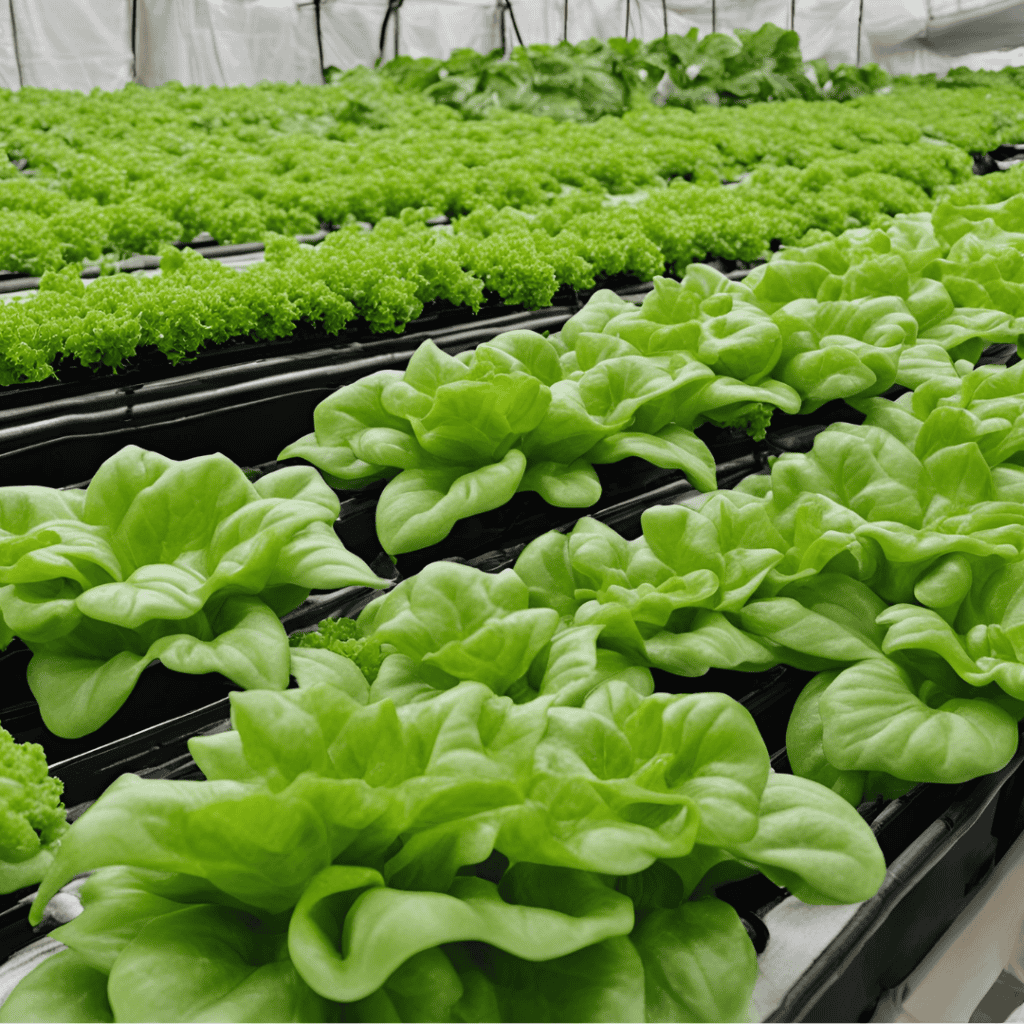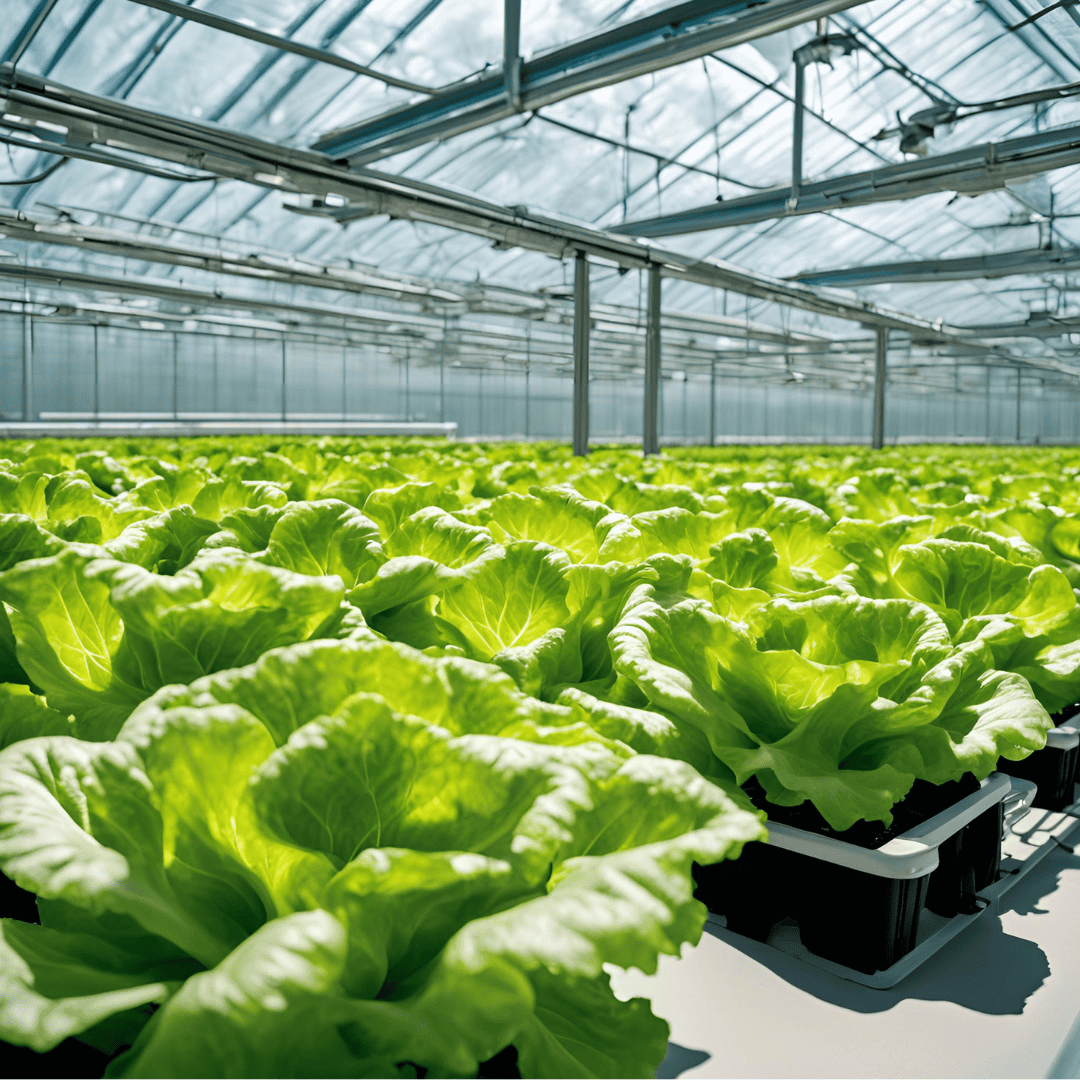Finding the best hydroponic nutrients for Ebb and Flow systems can significantly impact your plants’ growth and overall health. These systems function by flooding the roots with nutrient-rich water, which is then drained away, providing essential oxygen to the roots. This method promotes robust plant growth and vitality. Keep reading to discover tips on selecting the right nutrients for your garden, ensuring that your plants thrive in their hydroponic environment and yield impressive results !
Key Takeaway
- Ebb and Flow systems require balanced nutrients for optimal plant growth.
- Different plants may need specific nutrient mixtures.
- Quality nutrients can enhance yield and plant health.
Understanding Hydroponic Nutrients
In Ebb and Flow setups, plants rely heavily on nutrient solutions mixed with water to grow effectively. This unique system ensures that the roots are periodically flooded with nutrient-rich water, promoting optimal nutrient absorption. The right nutrient mix is crucial, as it provides essential minerals such as nitrogen, phosphorus, and potassium, which are vital for plant development. Research consistently shows that utilizing high-quality nutrients can lead to significantly improved plant health, increased vigor, and higher overall yields.
Key Nutrients for Ebb and Flow Systems

When growing plants in Ebb and Flow systems, knowing the key nutrients is vital for success. These systems depend on a balanced mix of nutrients to support healthy growth. Ensuring that plants receive the right elements promotes their vitality and strength. By focusing on these essential nutrients, gardeners can create an optimal environment for their plants to thrive. Here are some important nutrients for Ebb and Flow systems:
Nitrogen (N)
Nitrogen is a crucial nutrient that plays a significant role in the growth of leaves and stems in plants. It is vital for the production of proteins and chlorophyll, which are necessary for photosynthesis. This process not only helps plants absorb sunlight but also contributes to their vibrant green color, making nitrogen essential for maintaining healthy, thriving plants (1).
Phosphorus (P)
Phosphorus is an essential nutrient that greatly supports strong root development and enhances flower production in plants. It plays a crucial role in the transfer of energy within the plant, which is vital for various growth processes. By providing the energy needed for growth, phosphorus helps plants develop robust roots and ultimately produce healthy fruits, ensuring a bountiful harvest.
Potassium (K)
Potassium is a vital nutrient that assists in regulating water uptake within plants, ensuring they maintain proper hydration levels. Additionally, it strengthens plant cell walls, providing structural support. This nutrient also enhances the plant’s ability to resist diseases and environmental stressors, leading to healthier overall growth. By promoting robustness, potassium helps plants thrive in various conditions, resulting in more vigorous and resilient crops.
Calcium (Ca)
Calcium is a crucial nutrient that plays a significant role in maintaining cell structure and stability within plants. It is essential for the proper development of both roots and shoots, ensuring that plants grow strong and healthy. Moreover, adequate calcium levels help prevent common issues like blossom end rot in fruits, which can otherwise severely affect crop yield and quality, making it vital for successful gardening.
Magnesium (Mg)
Magnesium is an essential nutrient that is a key component of chlorophyll, the green pigment responsible for photosynthesis in plants. This process allows plants to convert sunlight into energy, which is crucial for their growth and development. By ensuring adequate magnesium levels, plants are more likely to grow vigorously and maintain a healthy green color, effectively preventing the yellowing of leaves that can indicate nutrient deficiencies.
How to Mix Hydroponic Nutrients
Mixing hydroponic nutrients is a straightforward process that is essential for helping your plants receive the vital elements they need for healthy growth. Properly mixed nutrients provide the foundation for thriving plants in a hydroponic setup. Here’s a simple guide on how to effectively mix hydroponic nutrients, ensuring you create a solution tailored to your plants’ specific needs and promoting their overall health and development.
Read the Instructions
Begin by taking the time to carefully read the instructions provided on the nutrient packaging. Every product contains specific recommended ratios and amounts for mixing, which can vary significantly. It’s essential to follow these guidelines closely to ensure that you achieve the best results possible. Proper adherence to these instructions will lead to healthier plants and more successful growth in your hydroponic system (2).
Gather Supplies
To mix hydroponic nutrients effectively, you’ll need a few essential supplies, including clean water, measuring tools such as a measuring cup or scale, and your selected nutrient solutions. It’s important to use clean, non-chlorinated water, as chlorine can be harmful to plants and disrupt their growth. Having the right tools and water quality will help ensure your plants receive optimal nutrition.
Measure Nutrients
Using the instructions provided as a reference, carefully measure out the appropriate amounts of each nutrient solution required for your hydroponic system. Many hydroponic nutrient systems consist of multiple components, each serving a specific purpose. Therefore, it is vital to measure each part accurately to ensure that your plants receive the correct balance of nutrients, promoting healthy growth and development throughout their life cycle.
Mix with Water
Begin by adding the measured nutrients to a clean container filled with water. It’s advisable to mix the nutrients one at a time, starting with the base nutrient solution first, to maintain clarity in the process. After adding the base, you can incorporate any additional supplements as needed. Be sure to stir the solution gently to ensure all nutrients dissolve completely, creating a uniform and effective mixture.
Check pH Levels
After thoroughly mixing the nutrient solution, it is crucial to check the pH level to ensure it is suitable for plant growth. Most plants thrive optimally within a pH range of 5.5 to 6.5. If the pH falls outside this ideal range, you may need to make adjustments using pH up or pH down solutions to create a balanced environment for your plants.
Common Mistakes to Avoid
Many growers often make mistakes when selecting hydroponic nutrients for their plants. One of the most common errors is using either too much or too little of the nutrient solutions. Over-fertilizing can lead to nutrient burn, which damages plants and stunts their growth. Conversely, under-fertilizing can deprive plants of essential nutrients, resulting in weak, unhealthy plants. Striking the right balance is crucial for achieving optimal plant health and growth (3).
Another frequent mistake is neglecting to adjust the pH levels of the nutrient solution. The pH level significantly impacts a plant’s ability to absorb nutrients effectively. If the pH is too high or too low, plants may struggle to take in the essential elements they need. To prevent this issue, it’s important to always check the pH level and make necessary adjustments using pH up or pH down solutions, ensuring that plants can absorb nutrients properly and thrive.
Frequently asked question
What are hydroponic nutrients?
Hydroponic nutrients are special fertilizers designed for plants that grow without soil. Instead of relying on soil for nutrients, these fertilizers mix with water to provide essential minerals and elements that plants need to grow strong and healthy. They usually contain important nutrients like nitrogen, phosphorus, and potassium, which support various growth functions in plants.
Why are nutrients important in Ebb and Flow systems?
In Ebb and Flow systems, nutrients are crucial because plants rely on nutrient-rich water for their growth. This system works by flooding plant roots with water and nutrients, then draining it away. The flooding provides plants with essential nutrients, while the drainage allows oxygen to reach the roots, promoting healthy growth. Without the right nutrients, plants may struggle to thrive.
How do I choose the right nutrients for my Ebb and Flow system?
When choosing nutrients for your Ebb and Flow system, consider your plants’ specific needs. Look for nutrients that provide a balanced mix of essential minerals. It’s also important to select products that are suitable for hydroponic systems, as they dissolve well in water. Reading reviews and doing a bit of research can help you find the best options.
How often should I change the nutrient solution?
Changing the nutrient solution regularly is important for maintaining plant health. A good rule of thumb is to change the solution every two weeks. However, it’s essential to monitor your plants and check the nutrient levels frequently. If the solution becomes cloudy or shows signs of algae growth, it’s time to replace it. Keeping the solution fresh ensures that your plants receive the nutrients they need.
Can I use organic nutrients in hydroponics?
Yes, you can use organic nutrients in hydroponic systems, including Ebb and Flow setups. Organic nutrients come from natural sources and can provide essential minerals for plant growth. However, it’s important to ensure that the organic nutrients you choose are specifically formulated for hydroponics, as some may not dissolve well in water or could lead to unwanted issues. Always check compatibility with your system for the best results.
How do I monitor nutrient levels in my system?
Monitoring nutrient levels in your hydroponic system is key to successful growing. You can use a nutrient meter or a TDS (total dissolved solids) meter to measure the concentration of nutrients in your solution. Additionally, regularly checking the pH level is important, as it affects nutrient absorption. Maintaining the pH within the ideal range of 5.5 to 6.5 will help ensure your plants can effectively take in the nutrients they need.
What signs indicate nutrient deficiencies in plants?
Plants will often show specific signs when they’re not getting the nutrients they need. Common indicators of nutrient deficiencies include yellowing leaves, stunted growth, and weak stems. If you notice brown spots or leaf curling, it could signal a lack of essential minerals. Observing your plants closely and understanding these signs will help you address any nutrient issues quickly, keeping your plants healthy and thriving.
Is it necessary to use pH adjustment solutions?
Using pH adjustment solutions can be necessary for maintaining the proper pH level in your hydroponic system. The pH level affects how well plants can absorb nutrients. If the pH is too high or too low, it can hinder nutrient uptake and lead to deficiencies. Regularly testing the pH and adjusting it as needed using pH up or pH down solutions will help ensure your plants stay healthy and grow well.
Conclusion
Choosing the best hydroponic nutrients for Ebb and Flow systems is essential for achieving plant success and maximizing growth potential. Understanding the specific nutrient needs of your plants, selecting high-quality products, and regularly monitoring nutrient levels can greatly enhance overall growth and vitality. By adopting the right approach and practices, gardeners can enjoy the rewards of healthy plants and impressive yields. With dedication and care, your hydroponic garden can flourish, leading to a fruitful and satisfying growing experience. Happy growing !
References
1. https://staal-plast.dk/ebb-flow-systems-how-does-it-work/
2.https://www.dosatron.com/en-us/blog/mixing-hydroponic-nutrients-a-comprehensive-guide
3.https://www.advancednutrients.com/articles/the-four-most-common-errors-hydroponic-growers-make/
Related Articles
1.https://tophydroponicgarden.com/understanding-hydroponic-nutrients/
2.https://tophydroponicgarden.com/how-do-you-know-when-to-add-nutrients-to-hydroponics/
3.https://tophydroponicgarden.com/common-hydroponic-mistakes/
Was this helpful?

I’m Barrie L., a passionate hydroponic gardening enthusiast dedicated to cultivating thriving, soil-less gardens. With a focus on all things hydroponic, I share my expertise on innovative growing techniques and sustainable practices through my blog, tophydroponicgarden.com. As a seasoned hydroponics specialist, my goal is to inspire and guide fellow gardeners in harnessing the power of water-based cultivation for bountiful and eco-friendly harvests. I’m also an author of the book “Hydroponics For Absolute Beginners: Your Step By Step Guide For How To Create An Hydroponics System At Home Without Soil, For Growing Vegetable, Fruit And Herbs.” which is sold on Amazon. Join me on a journey of redefining the way we cultivate plants, one nutrient-rich solution at a time. Happy growing!

